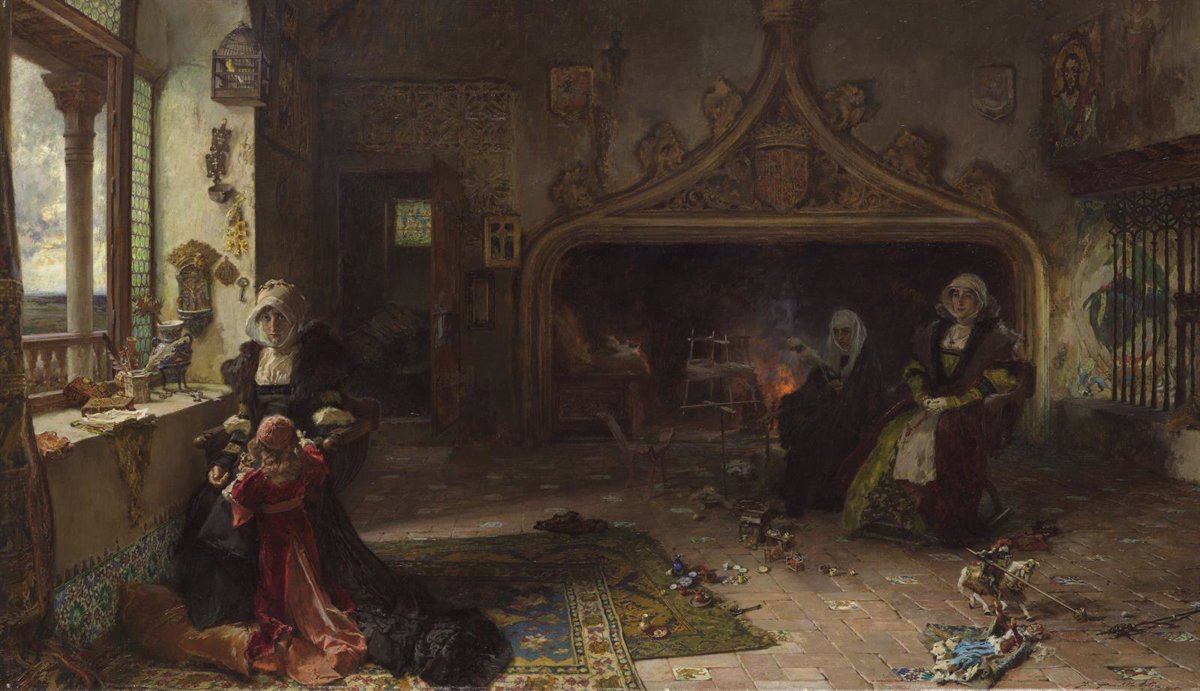The Prado Museum has enabled in room 60 of the Villanueva building a space with a selection of eight works by Francisco Pradilla, the ‘historical’ painter who best knew how to capture the “unhappy figure” of Juana La Loca in her works.
“That interest in Juana is related to a movement in which not only Pradilla participated, but also other painters such as Lorenzo Vallés or Eduardo Rosales who speak of that unfortunate figure. Not only with Doña Juana, they were also interested in other personalities such as the White Queen of Navarra“, explained the museum’s head of 19th-century painting conservation, Javier Barón.
In this way, authors such as Pradilla felt attracted by these “victims of the power exercised in history”, something that had to do with the moment that Spain was going through, very far from the time of great empire. “It is in line with the perception of the Spanish nation at a time that also ended with the loss of the coloniesBaron pointed out.
Pradilla achieved international success thanks to her painting ‘Doña Juana la Loca’ -which in this selection of works can be seen in a separate section in room 75, along with the sketch used for the painting-, receiving the maximum award of the Medal of Honor at the National Exhibition of 1878 and also at the Universal Exhibition in Paris that same year.
After a brief stint as director of the Prado Museum –between 1896 and 1898–, he continued to focus his gaze on the period between the fifteenth and sixteenth centuries, although history had already fallen into disuse. From this production are the works ‘The corpse of Beatriz de Cenci’ or ‘Courtship of the baptism of Prince Don Juan, son of the Catholic Monarchs, in Seville’, both also exhibited.
“Pradilla always believed in the possibility of recreating through his paintings the imaginary of the time of the Catholic Monarchs and their daughter. In addition to seeking verisimilitude, he managed to solve the problems of composition by giving the scenes movement, which at the time was a novelty,” Barón said.
A self-portrait of the painter from Zaragoza, ‘El Dux Marino Faliero’ -in which the influence of Fortuny as a watercolourist, with whom he coincided in Rome-, the ‘Arabian Horse of Count Bobrinski’ –which served as a study for the horse in his later magnum opus of the ‘Surrender of Grenada’— and three other works on Juana de Castilla complete this tribute, coinciding with the centenary of the artist’s death.
The deputy director of conservation and research at the Museo Nacional del Prado, Andrés Úbeda, has remarked that most of the works are recent acquisitions –there are also donations for an exhibition sponsored by Ramón y Cajal Abogados–.
What’s more, has remarked that half of the Prado Museum’s catalog corresponds to works from the 19th and early 20th centuries hence the importance of exhibitions like this one that are rescuing funds from the art gallery for the public.
